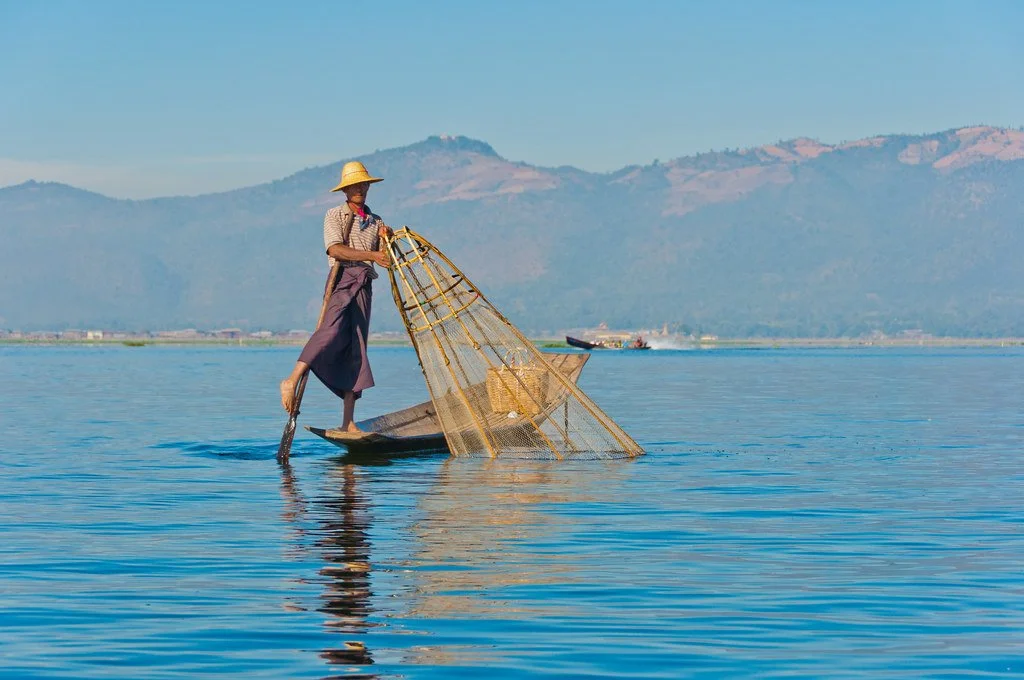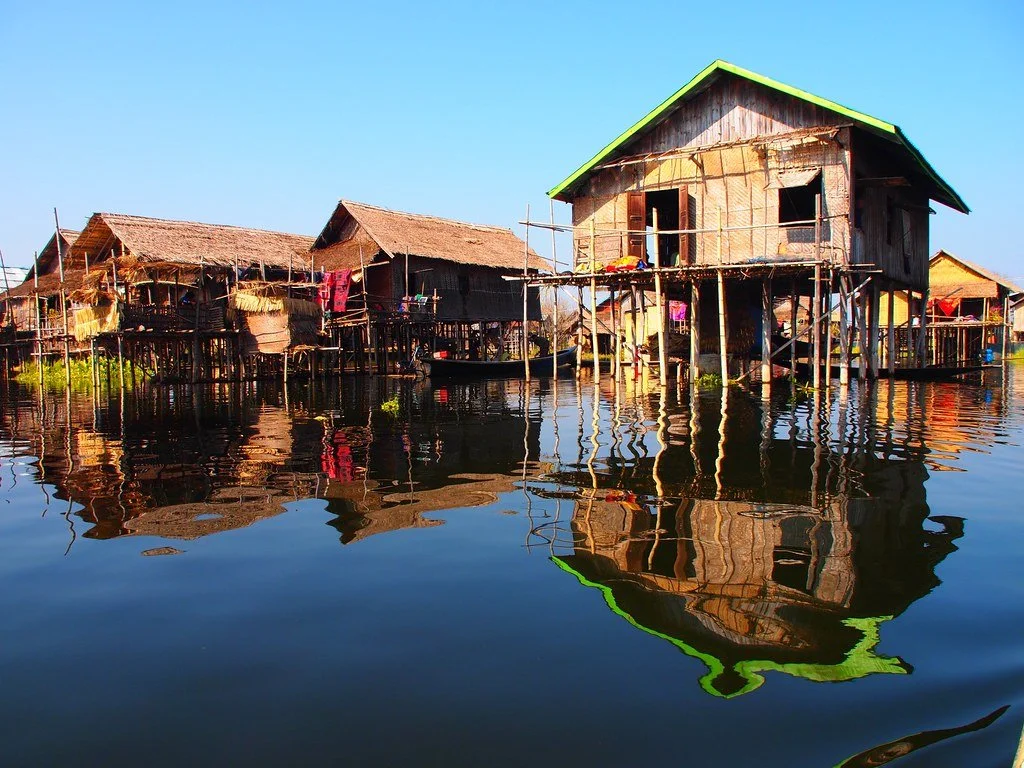Inle Lake is home to communities based entirely around the water, while fears of ecological damage have locals and conservationists concerned.
Inle Lake, positioned between mountains in Myanmar, is home to 17 different villages with unique cultures and traditions. Inle lake is the second largest lake in Myanmar, roughly 14 miles long, and is in the center of the Shan state. The lake is populated by the local Intha people, whose livelihoods are developed around the water. Bamboo houses are built on stilts above the water, to allow plenty of airflow in the humid environment. Additionally, the stilt houses add the advantage of flood protection, letting the water flow between dwelligns. Locals rely on water transportation, making the stilted houses perfect for boat access. Another notable unique aspect of Inle lake is the style of paddling fisherman use, curving on leg around the ore while standing in the boat.
Daily life on Inle lake is centered around the water, including their gardens. Locals grow floating gardens that are made of reeds and other plants. The gardens are floating (and not on stilts, like many of the structures are on the lake), making them very resistant to floods. The gardens are used for growing vegetables, especially tomatoes, due to the climate. Locals use the gardens for personal produce and to sell the vegetables they grow as a source of income.
A popular textile of the region comes from lotus weaving, a tradition that many local women take part in. The villages Kyaing Khan and In Paw Khon are considered centers of lotus weaving. However, women all around Inle Lake create textiles from lotus weaving. Women started the practice roughly 100 years ago, weaving textiles from lotus flowers that grow on the lake.
Of the communities on the lake, Ywama Village is one of the most well-known, specifically for its floating market. The market is held every five days and is made up entirely of vendors and customers in boats. The market includes everything from vegetables and fish to clothing.Ywama also is home to an important religious site on Inle lake, the Phaung Daw Oo pagoda. This Buddhist monastery houses five images of the Buddha that were brought to the area in the 12th century. The images have been continuously covered in gold leaf, to the point where the images of the Budhha are completely covered. Buddhists visit the monastery and apply gold leaf as a sign of respect, leading to layers upon layers of gold. Every year a festival takes place during the month of Thadingyut (October/ November), which consists of boats carrying the images of the Buddha to the different villages on the lake. The festival is 18 days long, and each boat stops at each village for a night. Unfortunately, in 1965, a boat capsized during the festival, and one of the images was lost in the water. The image was then miraculously found back in the pagoda. Since then, it has remained in the pagoda even during the festival.
Following the sacred boats. Scott Edmunds. CC BY 2.0
While Inle Lake has a thriving culture and a long history, there are fears about Inle Lake’s long-term conservation, as the region has experienced several droughts, including a severe one in 2010. Soil erosion, deforestation and pesticides in the water are some of the main concerns for conservationists. The Ministry of Environmental Conservation and Forestry partnered with UN-Habitat in 2011 to create a plan to conserve Inle Lake in response to the significant drought the year before. Additionally, the main concern was that the heavy inflow of tourists caused an increase in the use of motorboats that resulted in more spillage and contaminated the water. In 2018 the United Nations Development Program launched an initiative to draft a law through local and state governments to conserve the lake. By February 2019, the Conservation Law was passed and is considered a major step forward in the conservation process. Inle Lake is a UNESCO Man and Biosphere Reserve. It is widely acknowledged as an important cultural and ecological place to preserve.
Despite being isolated from other major tourist attractions in Myanmar, Inle Lake still has travelers visiting at an increasing rate. Roughly 20 miles from the closest airport, the roads to Inle Lake can be long and rough. The fastest route is to fly to Heho, but some visitors drive the long hours from Bagan, Mandalay, Thazi or Kalaw. Once you arrive at Inle Lake, there are hotels available that cater to travelers. In addition to the long journey to Inle Lake, high levels of unrest and conflict due to the military taking control in a coup in early February 2021 makes travel in the region difficult. Many have fled Myanmar after the coup, and the potential danger has made travel in the area unadvisable.
Dana Flynn
Dana Flynn is a recent graduate from Tufts University with a degree in English. While at Tufts she enjoyed working on a campus literary magazine and reading as much as possible. Originally from the Pacific Northwest, she loves to explore and learn new things.





















